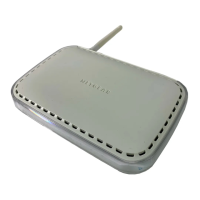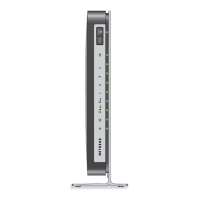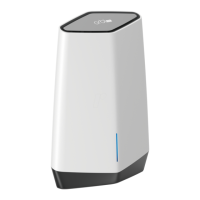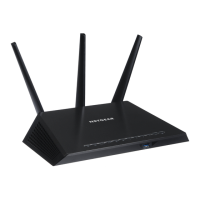Reference Manual for the 108 Mbps Wireless Firewall Router WGT624 v3
7-8 Advanced Configuration
v3.0, December 2005
The default DMZ server feature is helpful when using some online games and
videoconferencing applications that are incompatible with NAT. The router is programmed to
recognize some of these applications and to work properly with them, but there are other
applications that may not function well. In some cases, one local computer can run the
application properly if that computer’s IP address is entered as the default DMZ server.
Incoming traffic from the Internet is normally discarded by the router unless the traffic is a
response to one of your local computers or a service that you have configured in the Ports menu.
Instead of discarding this traffic, you can have it forwarded to one computer on your network. This
computer is called the Default DMZ Server.
The WAN Setup menu lets you configure a Default DMZ Server.
To assign a computer or server to be a Default DMZ server, follow these steps:
1. Click WAN Setup link on the Advanced section of the main menu.
2. Type the IP address for that server. To remove the default DMZ server, clear the Default DMZ
Server checkbox.
3. Click Apply.
Respond to a Ping on the Internet WAN Port
If you want the router to respond to a 'ping' from the Internet, select the Respond to Ping on
Internet WAN Port check box. This should only be used as a diagnostic tool, since it allows your
router to be discovered. Don't check this box unless you have a specific reason to do so.
Setting the MTU Size
The default MTU size does not usually need to be changed. The normal MTU (Maximum
Transmit Unit) value for most Ethernet networks is 1500 Bytes. For some ISPs, particularly some
using PPPoE, you may need to reduce the MTU. This should not be done unless you are sure it is
necessary for your ISP.
Any packets sent through the router that are larger than the configured MTU size will be
repackaged into smaller packets to meet the MTU requirement.
Note: DMZ servers pose a security risk. A computer designated as the default DMZ
server loses much of the protection of the firewall, and is exposed to exploits
from the Internet. If compromised, the DMZ server can be used to attack your
network.

